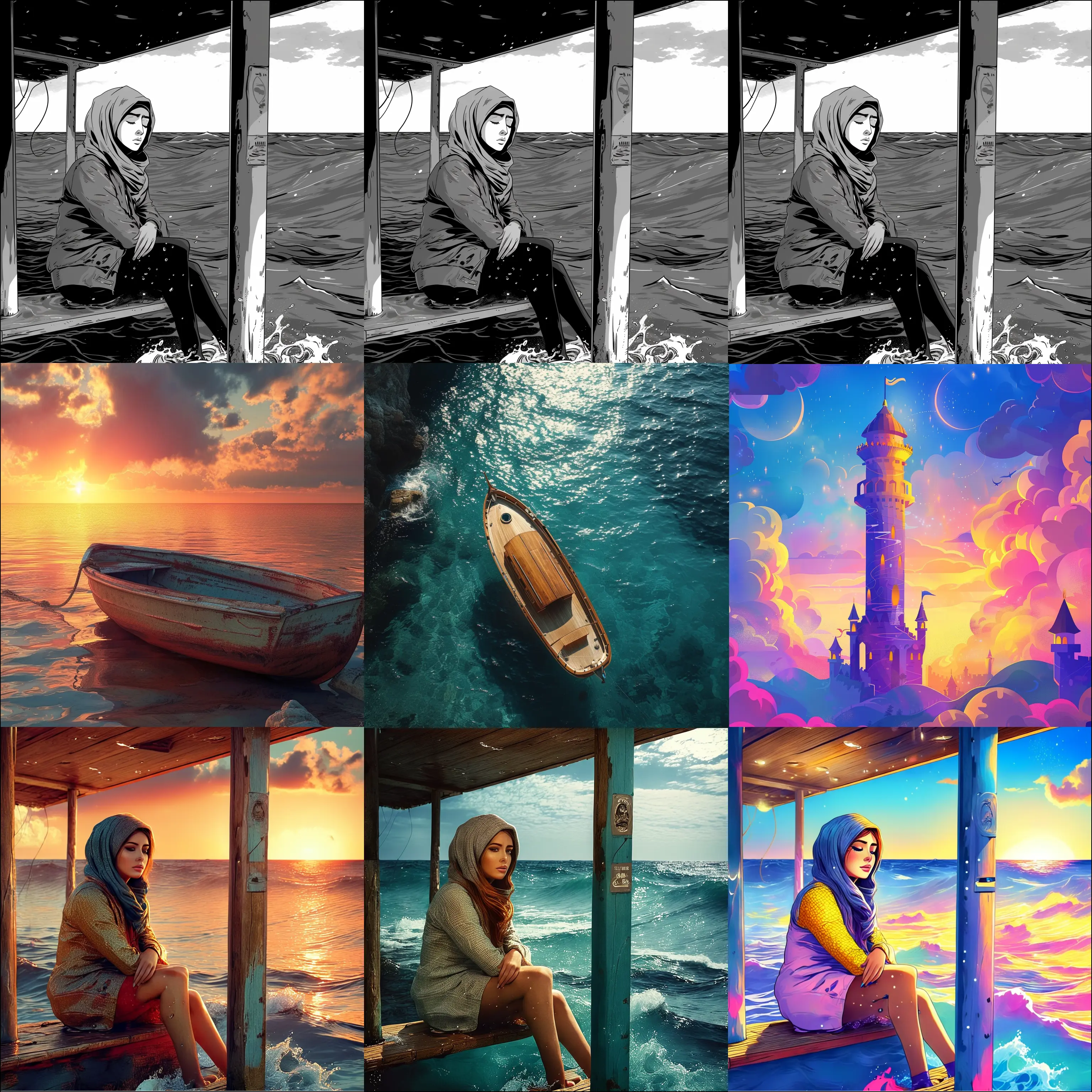ComfyUI Node: KMeansColor
KMeansColor
CategoryBmad/CV/Color A.
bmad4ever (Account age: 3682days) Extension
Bmad Nodes Latest Updated
2024-09-02 Github Stars
0.06K
How to Install Bmad Nodes
Install this extension via the ComfyUI Manager by searching for Bmad Nodes- 1. Click the Manager button in the main menu
- 2. Select Custom Nodes Manager button
- 3. Enter Bmad Nodes in the search bar
Visit ComfyUI Online for ready-to-use ComfyUI environment
- Free trial available
- 16GB VRAM to 80GB VRAM GPU machines
- 400+ preloaded models/nodes
- Freedom to upload custom models/nodes
- 200+ ready-to-run workflows
- 100% private workspace with up to 200GB storage
- Dedicated Support
KMeansColor Description
Simplify color quantization in images using K-Means clustering for AI artists to reduce colors and create stylized looks.
KMeansColor:
The KMeansColor node is designed to simplify the process of color quantization in images using the K-Means clustering algorithm. This node is particularly useful for AI artists who want to reduce the number of colors in an image to a specified number, creating a more stylized or abstract look. By grouping similar colors together, the node helps in achieving a cohesive color palette, which can be beneficial for various artistic and design purposes. The KMeansColor node leverages the power of the K-Means algorithm to efficiently cluster pixel colors, making it easier to manipulate and analyze the color composition of an image.
KMeansColor Input Parameters:
image
This parameter expects an image input that you want to process. The image should be in a format that the node can interpret, typically a tensor representation of the image.
number_of_colors
This integer parameter specifies the number of color clusters you want to reduce the image to. The default value is 2, with a minimum value of 1. Increasing this number will result in more color clusters, which can retain more details of the original image, while a lower number will create a more abstract representation.
max_iterations
This integer parameter defines the maximum number of iterations the K-Means algorithm will perform. The default value is 100. Higher values can lead to more accurate clustering but will take more time to compute.
eps
This floating-point parameter sets the convergence criteria for the K-Means algorithm. The default value is 0.2, with a step size of 0.05. This value determines the precision of the clustering process; smaller values can lead to more precise clustering but may require more iterations.
KMeansColor Output Parameters:
IMAGE
The output is an image that has been processed to contain only the specified number of colors. This image is returned in a tensor format, making it ready for further processing or analysis. The resulting image will have a stylized look with distinct color clusters, which can be used for various artistic and design applications.
KMeansColor Usage Tips:
- Experiment with the
number_of_colorsparameter to find the optimal number of color clusters for your specific artistic needs. Fewer colors can create a more abstract look, while more colors can retain more details. - Adjust the
max_iterationsparameter if you notice that the clustering process is not converging. Increasing the number of iterations can improve the accuracy of the color clusters. - Fine-tune the
epsparameter to balance between precision and computation time. Smaller values can lead to more precise clustering but may require more iterations to converge.
KMeansColor Common Errors and Solutions:
"Image format not supported"
- Explanation: The input image is not in a format that the node can interpret.
- Solution: Ensure that the image is provided in a tensor format compatible with the node.
"Number of colors must be at least 1"
- Explanation: The
number_of_colorsparameter is set to a value less than 1. - Solution: Set thenumber_of_colorsparameter to a value of 1 or higher.
"Max iterations must be a positive integer"
- Explanation: The
max_iterationsparameter is set to a non-positive value. - Solution: Ensure that the
max_iterationsparameter is set to a positive integer.
"Eps must be a positive float"
- Explanation: The
epsparameter is set to a non-positive value. - Solution: Set the
epsparameter to a positive float value to ensure proper convergence criteria.
KMeansColor Related Nodes
RunComfy is the premier ComfyUI platform, offering ComfyUI online environment and services, along with ComfyUI workflows featuring stunning visuals. RunComfy also provides AI Playground, enabling artists to harness the latest AI tools to create incredible art.


